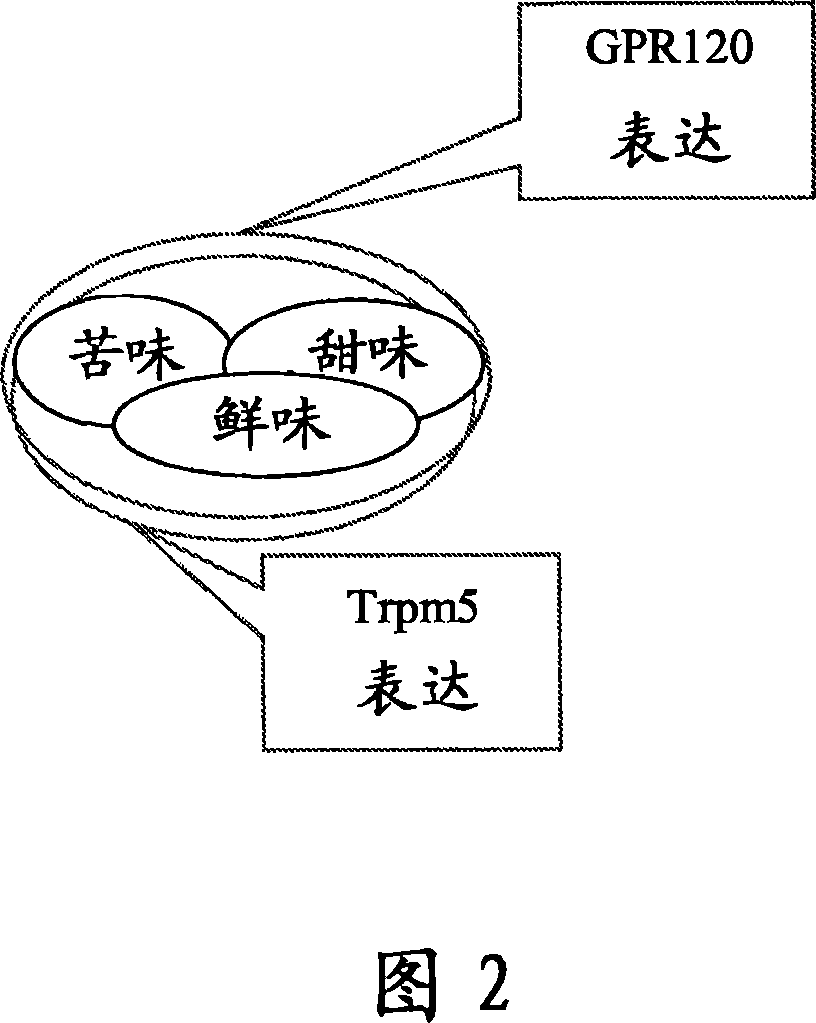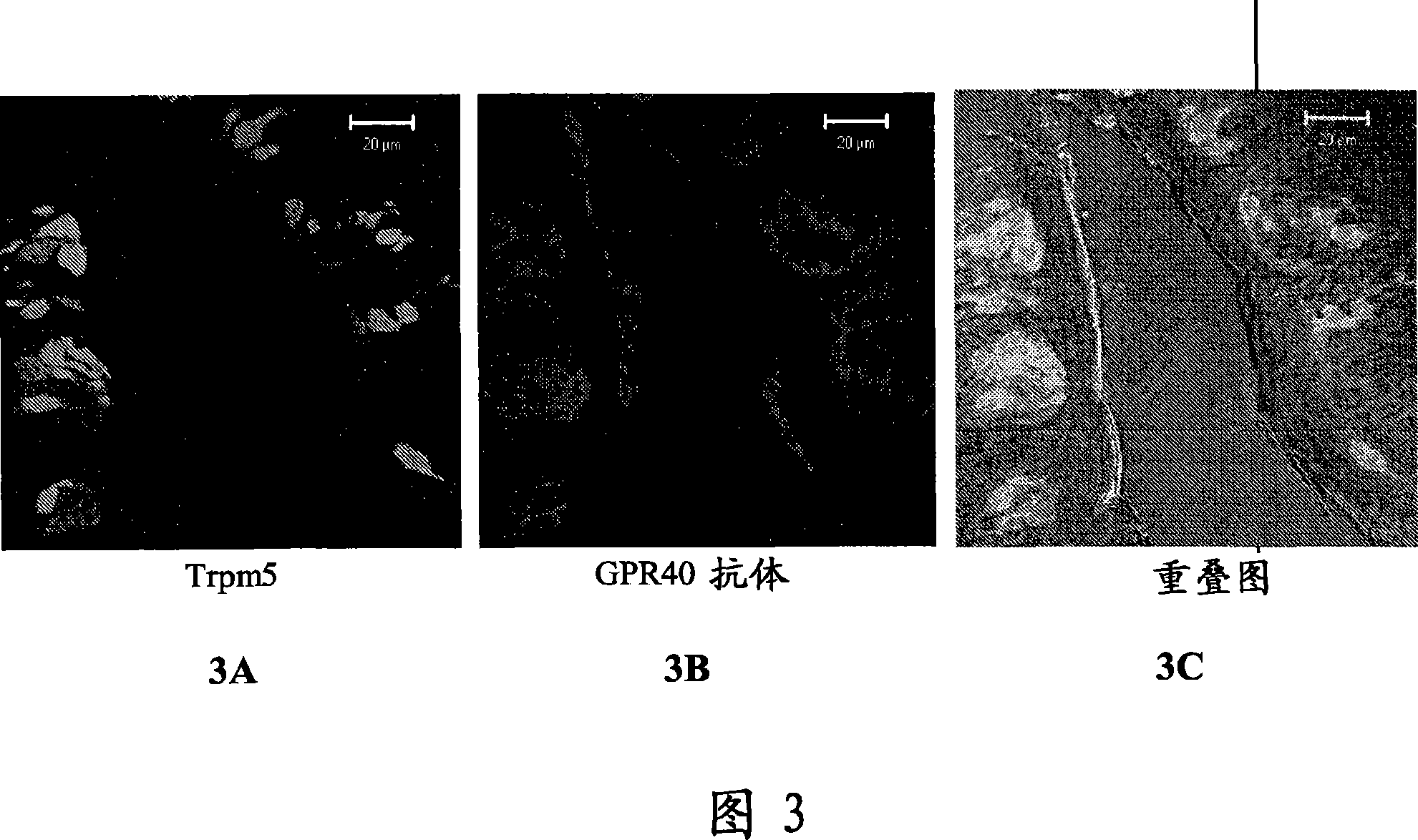Fat taste receptors and their methods of use
A taste receptor and fat technology, used in the identification of compounds that taste like fat and in the field of food preparation, can solve the problems that the taste and delicious taste of fat cannot be completely simulated
- Summary
- Abstract
- Description
- Claims
- Application Information
AI Technical Summary
Problems solved by technology
Method used
Image
Examples
Embodiment Construction
[0019] The present invention is based in part on the discovery of fat taste receptors and the proteins that make up fat taste receptors. The protein is a member of a class of proteins known as G protein-coupled receptors, or GPCRs, and includes GPR40 and GPR120. The inventors have demonstrated that these receptors are present in cellular taste tissue expressing Trpm5, a key taste signaling protein. In addition, the inventors demonstrated that mice lacking a functional GPR40 gene (GPR40 knockout mice) had a decreased preference for and intake of corn oil, Intralipid, lauric acid, and oleic acid. Together, these data demonstrate that GPR120 and GPR40 are fat taste receptors and can be utilized as screening tools for compounds that mimic fat taste. Such compounds can be incorporated into foods as fat substitutes.
[0020] Fat taste receptor proteins were identified in part by analogy to the taste phenomenon of bitter, sweet, and umami compounds in which taste perception is elic...
PUM
 Login to View More
Login to View More Abstract
Description
Claims
Application Information
 Login to View More
Login to View More - R&D
- Intellectual Property
- Life Sciences
- Materials
- Tech Scout
- Unparalleled Data Quality
- Higher Quality Content
- 60% Fewer Hallucinations
Browse by: Latest US Patents, China's latest patents, Technical Efficacy Thesaurus, Application Domain, Technology Topic, Popular Technical Reports.
© 2025 PatSnap. All rights reserved.Legal|Privacy policy|Modern Slavery Act Transparency Statement|Sitemap|About US| Contact US: help@patsnap.com



